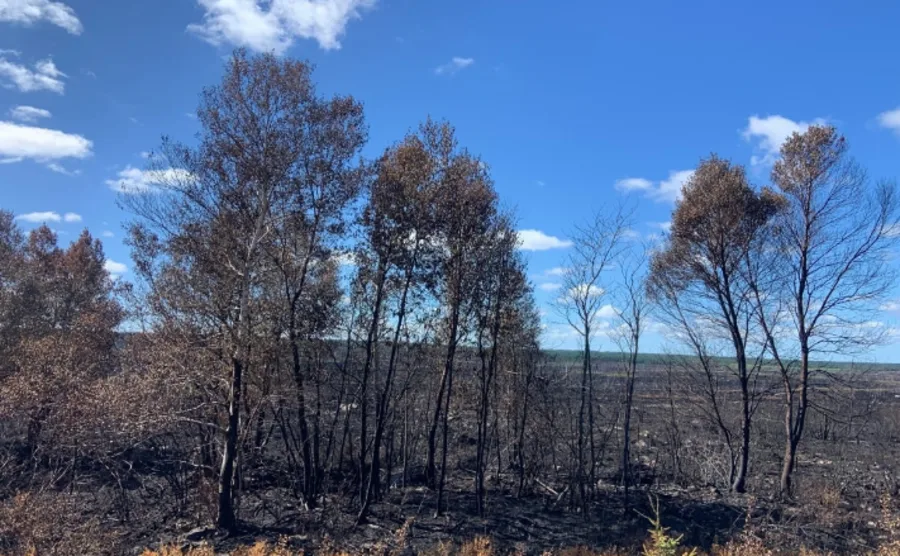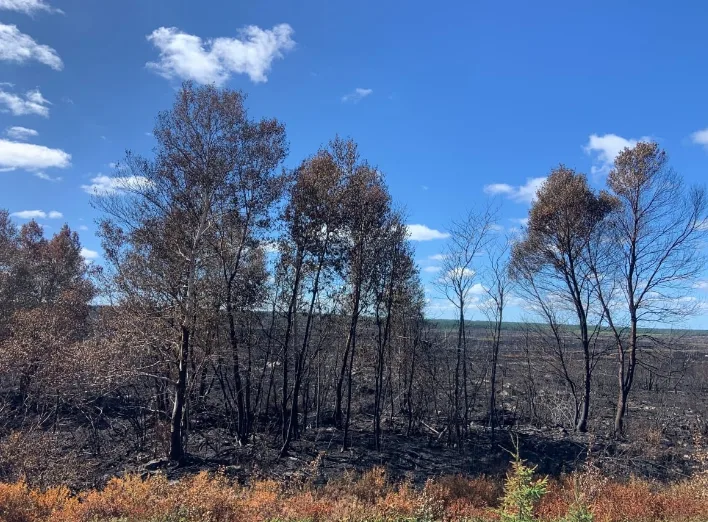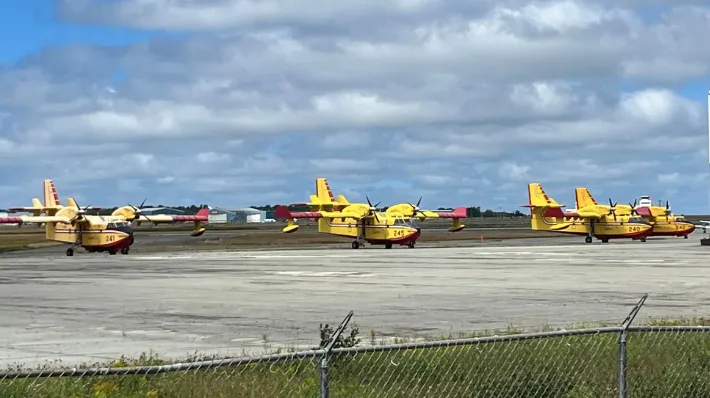
Newfoundland fires are 'turning a corner' as crews try to contain perimeter
Special air quality statements have lifted in areas affected by forest fires in central Newfoundland, as Premier Andrew Furey says the province is entering the next stage of fighting the flames.
Furey made the comments in a video posted on his social media pages alongside Forestry Minister Derrick Bragg. He says a string of favourable weather and better air quality levels than initially expected have helped firefighters tackle the fires in both the Paradise Lake region and off the Bay d'Espoir Highway.
"Because of the hard working women and men on the ground and in the air, we feel like the fire is turning a corner. This means the evacuation risk for Grand Falls-Windsor and Bishop's Falls is quite low right now," Furey said in the video published Thursday.
"The threat level has come down albeit, but it is still there."
Forest fire duty officer Jeff Motty says both major fires are remaining stable as of Friday morning, but was unable to provide exact size figrures ahead of a briefing later in the morning.
Both fires are still deemed out of control as of Friday. The Paradise Lake fire was last reported at 17,233 hectares in size, while the Bay d'Espoir Highway fire spanned 5,614 hectares as of Thursday morning.
"From the notes from last night, we never saw any growth in size on our wildfires … So the actual perimeter or footprint of the fire is pretty much remaining stable," Motty told CBC News Friday.
"Firefighters made a great lot of progress. .. They started to get hose lines out and are starting to really move around that fire and get some work done on the perimeters of the fire."

Crews are continuing to fight hot spots of smoke and flames in the Paradise Lake area and the Bay d'Espoir Highway in central Newfoundland Friday. (Darrell Roberts/CBC)
Motty said crews will continue to fight the flames on foot over the weekend on top of using helicopters and water bombers. He says firefighters are also beginning to transition away from the initial attack phase to working on hot spots — and on preventative measures like fire breaks for the future.
"It really kind of looks like we're making that transition from initial attack to more sustained action," Motty said.
"We're kind of like to the point where we've prevented any further growth of the fire, and now it's just kind of working to contain them. It's a sustained action or mop up, so a lot of work to come ahead of us."
ALSO READ: Wildfire terms Canadians should be familiar with this summer
Weather conditions will be sunny and warm with light winds in the Grand Falls-Windsor area as crews continue to fight the flames. A high temperature of around 22 degrees is expected with a humidex of 27, and light winds of around 10 to 20 km/h from the north.

Water bombers like these ones will continue to be used in firefighting over the weekend. (Henrike Wilhelm/CBC)
Environment Canada Meteorologist Mike Vandenberg said residents in the community could smell smoke in the air early this morning, but that will likely dissipate into the afternoon.
He's also watching the next weather system headed for the region, which could bring five to 10 millimetres of rain on Saturday night into Sunday morning.
Both Furey and Bragg encouraged residents to remain ready should the fire situation change, as any small factor could change the threat level to the region. The Bay d'Espoir Highway remains open as of Friday morning with an update on the road's status expected later in the morning.
"Our fire is still listed as out of control. When we saw out of control four or five days ago, there was flames in the sky," Bragg said.
This story was originally published by CBC News.









